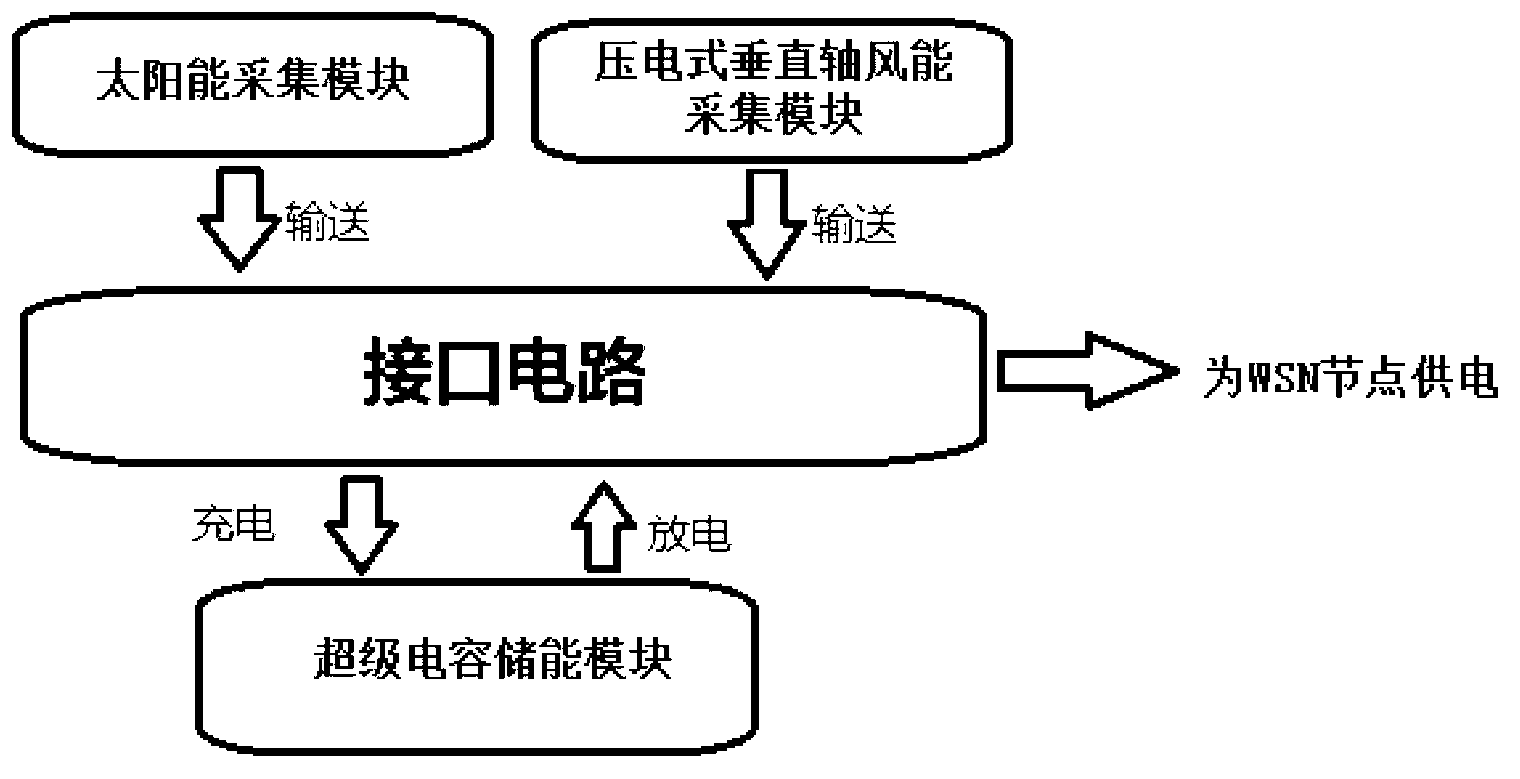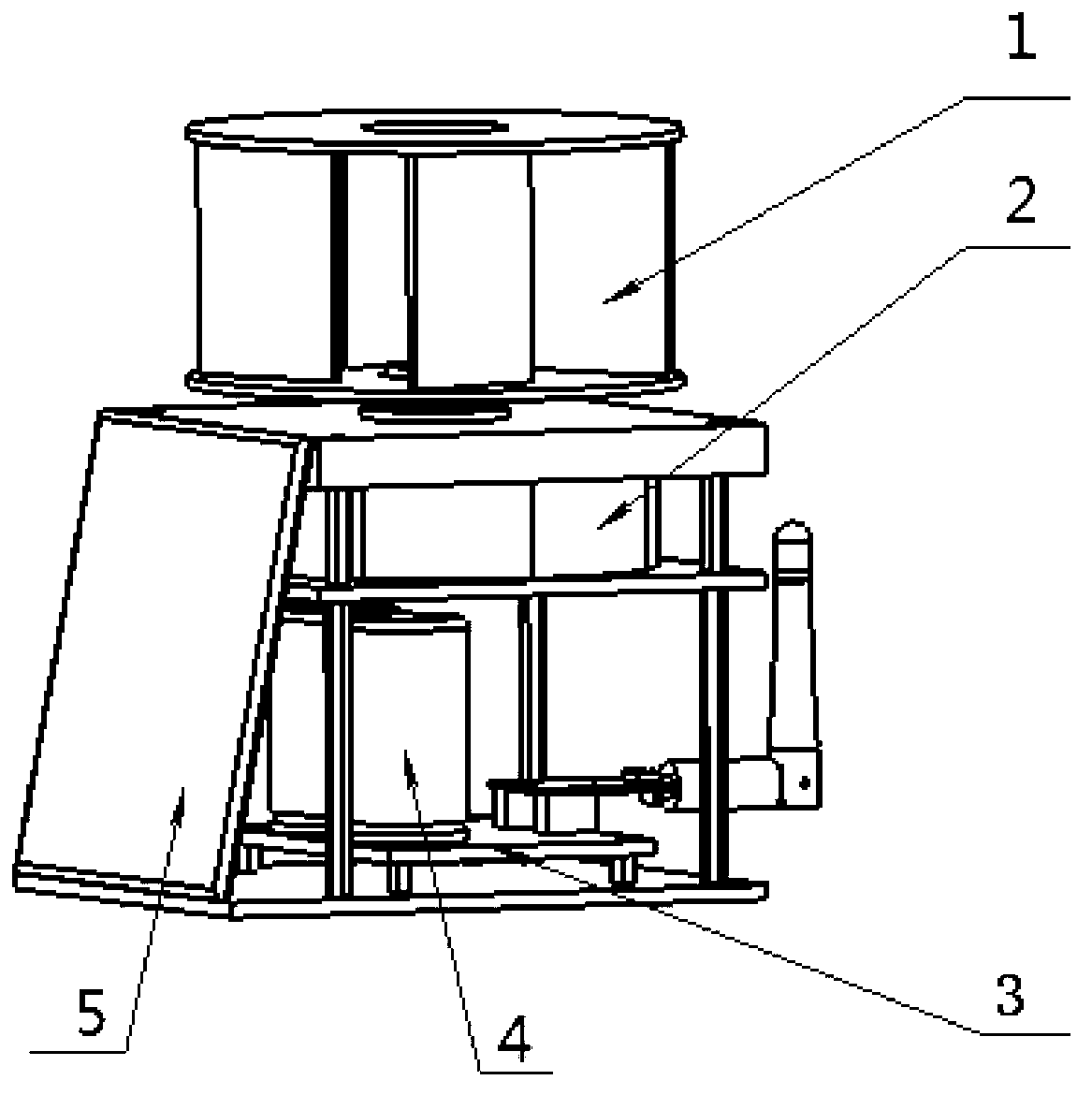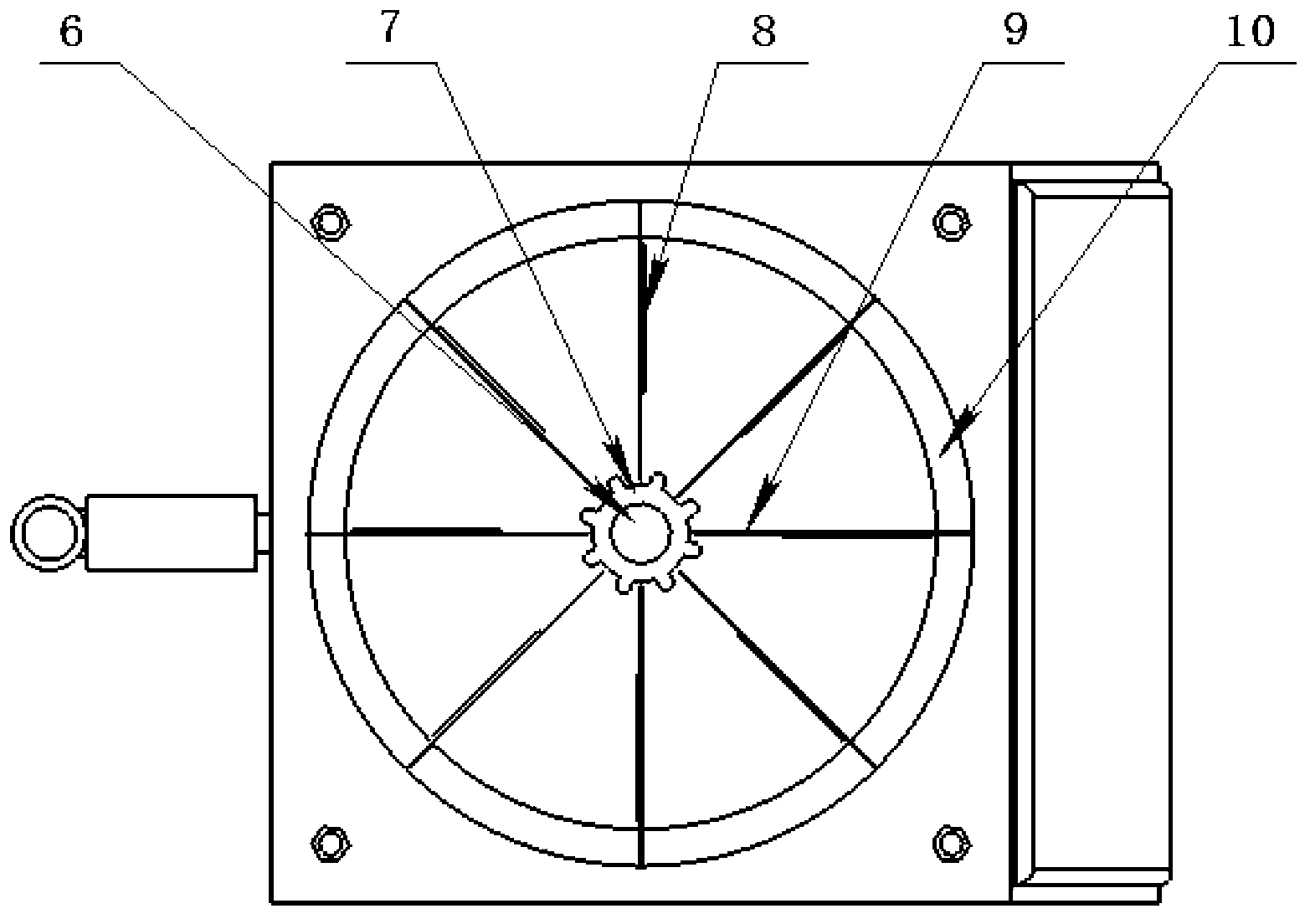Wireless sensor network (WSN) node self-powered system based on solar energy-wind energy complementation
A technology of power supply system and solar energy, applied in piezoelectric effect/electrostrictive or magnetostrictive motors, collectors, electric vehicles, etc., can solve the problem of low energy density, inability to complement each other, and limit the service life of self-powered systems and the use environment to achieve the effect of solving short life and realizing self-power supply
- Summary
- Abstract
- Description
- Claims
- Application Information
AI Technical Summary
Problems solved by technology
Method used
Image
Examples
Embodiment Construction
[0022] Specific embodiments of the present invention will be described in detail below in conjunction with the technical solutions and drawings, but the embodiments of the present invention are not limited thereto.
[0023] Such as figure 1 As shown in the figure, it is easy to see the connection relationship between the modules: the interface circuit is the link between the various modules in the system. The solar energy harvesting module and the piezoelectric vertical axis wind energy harvesting module collect the energy in the environment and charge the supercapacitor through the interface circuit, store the electric energy in the supercapacitor energy storage module, and directly supply power to the wireless sensor network nodes (when When the energy in the supercapacitor energy storage module is full). When the amount of environmental energy collected is not enough to supply power to the nodes, the supercapacitor will discharge to supply power to the nodes. Once the ener...
PUM
 Login to View More
Login to View More Abstract
Description
Claims
Application Information
 Login to View More
Login to View More - R&D
- Intellectual Property
- Life Sciences
- Materials
- Tech Scout
- Unparalleled Data Quality
- Higher Quality Content
- 60% Fewer Hallucinations
Browse by: Latest US Patents, China's latest patents, Technical Efficacy Thesaurus, Application Domain, Technology Topic, Popular Technical Reports.
© 2025 PatSnap. All rights reserved.Legal|Privacy policy|Modern Slavery Act Transparency Statement|Sitemap|About US| Contact US: help@patsnap.com



